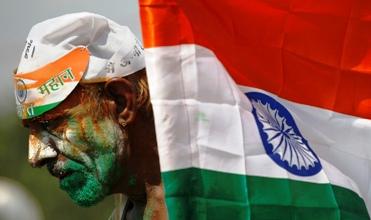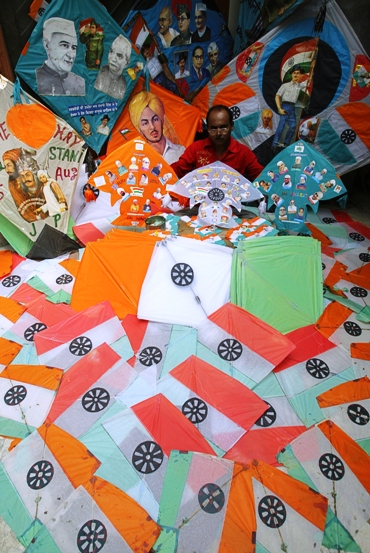
The Bombay Stock Exchange benchmark Sensex has declined 17 per cent in this calendar year and has underperformed the US and European markets.
Among major Asia-Pacific markets, only Hang Seng has underperformed the Sensex.
Nevertheless, the current price to earnings multiple of the 30-scrip Sensex, at 15.8 times, suggests that the Indian market is not cheap compared to other major global indices in the US, Europe and Asia-Pacific, which are trading at P/E multiples of 8-13 times.
Also, the one-year P/E of 13.3 times is higher than other key global indices.
The trading valuations of 13.3 times based on one-year forward earnings, although reasonable, have been 10 per cent below the 15-year average.
. . .

The Sensex has traded below these levels on seven occasions in the past 16 years, and valuations remained below these levels for more than two years after the dot-com bust. Since 1994, the Sensex has seen three large valuation cycles where the average duration from peak to trough was around 30 months.
However, during the Lehman crisis, which led to the global liquidity crunch, the cycle duration was 15 months.
According to market analysts in Angel Broking, if the historical cycle durations were to hold true, we may see a downward bias till at least the end of the next calendar year.
However, the market may not fall as steep as witnessed in the previous cycles (down 60 per cent), as valuations are not that demanding this time around.
. . .

The Sensex has already retraced more than 25 per cent from the peak valuations of the current cycle.
According to Standard Chartered analysts, valuations during the previous cycle of low growth (2001-04) could get re-tested as the monetary policy's increasing tolerance to lower growth could prolong the slowdown.
The current valuation is more to do with a rate tightening cycle, led by persistent inflation, pressure on margins and high interest rates driving down the return on equity to 18 per cent from a historical average of over 20 per cent.
Economic slowdown has led to an earnings downgrade cycle with FY12 earnings being downgraded by nine per cent over the past four quarters.
. . .

However, with consensus estimates still implying a 15-16 per cent compounded growth rate in earnings per shares over FY11-13, there is scope for further downgrades and earnings downgrade cycle to continue during the coming earnings season.
Bank of America Merrill Lynch analysts said, besides global worries, investor focus had been on persistent inflation and the RBI policy action.
Analysts still expect another rate increase in October before there is a pause and subsequent cuts from April 2012.
While markets may see a rally on a RBI pause, it is likely to be range-bound over the next six months, as concerns shift from inflation and rates to slower growth. Rate cuts are positives for markets but markets are more concerned about growth.
Rallies are usually with a lag of four-six months.
. . .

A UBS Investment research report indicates Indian stocks have priced in most of the bad news, such as slowing economic growth, negative earnings momentum, high inflation, rupee depreciation and high interest rates.
Still, they could correct another 15-20 per cent if there are FII outflows due to global events.
The second quarter turned out to be the third consecutive quarter of virtually nil net FII flows, largely responsible for the sluggish performance of the markets in the period.
The EPFR data suggested outflow of $463 million in August and $2,129 billion in three months in India-dedicated funds.
India allocation for Asia (ex-Japan) funds reached 10.3 per cent, down from 11.7 per cent a year ago.